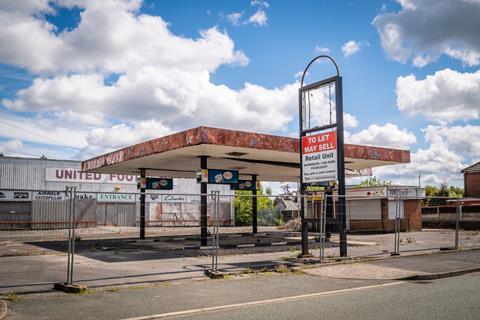Policy criticised as committee opens short inquiry into policy
The government’s plans to recategorise ‘poor quality’ green belt land as ‘grey belt’ is likely to result in confusion among planners and a surge in legal challenges, a parliamentary committee has been told.
The House of Lords built environment launched its short inquiry into the grey belt last week (15 October), hearing from the leaders of two bodies representing the planning sector.
Labour’s grey belt concept, which has been out for consultation as part of proposed changes to the National Planning Policy Framework, is meant to make it easier for protected land to be released for development if it does not perform well in achieving the green belt’s five key purposes.

The government has also set out “golden rules” for grey belt development, which include a 50% affordable housing requirement.
But the proposals were slammed by Dr Hugh Ellis, policy director at the Town and Country Planning Association, who described them as a “political idea being retrofitted into public policy”.
Asked by the committee whether the proposed grey belt definition was clear enough for planning officers to implement it without delay, Ellis said emphatically that it was not.
“The grey-belt proposition is an entirely new planning concept and as a result its definition is extremely broad,” he said.
Ellis said there was little research or evidence to establish what grey belt actually means, questioning how the notion of land making “limited” contribution to the green belt could be interpreted.
“If you are going to say it is ‘previously developed land’, that is one thing; we understand what that is,” he explained.
>> See also: Grey belt, green belt and the curious case of Labour’s benchmark land value
“But if you say ‘any other land that makes a limited contribution to the purposes of green belt’, I can happily sustain 25 judicial reviews arguing what that means.”
He said that the government had not defined the term “limited” in detail and said this would create “an enormous amount of confusion and legal battle about what the concept means”.
Ellis said his professional view was that the term “should never be used in national planning policy” and that he could “find no effective way of adding to that definition that would make it operationally effective for local planners on the ground”.
He said the policy would be “highly controversial” and that this political battle would be “a diversion from the real issue of dealing with the housing crisis, which is how you turn planning consents into delivered homes”.
Victoria Hills, chief executive of the Royal Town Planning Institute, also raised concerns about the policy.
She said that while the RTPI was “agnostic” on whether the government moved forward with grey belt, she raised similar concerns about definitions and said there were “perfectly workable provisions that already exist to release land now”.
Hills said that a return to more strategic planning was the real priority and said she was “looking forward to seeing the mechanism that comes forward” in the Devolution Bill.
She also said the variability of land prices across the country could render the 50% affordable housing requirement, set out as one of Labour’s golden rules for building on the green belt, “may actually render the whole thing meaningless in huge swathes of the country”.
Addressing the number of additional homes that could be delivered on grey belt land, Hills said there was no “black and white sum”.
“The way grey belt is currently defined is about a process of releasing land from green belt, and it is not a straightforward process […] which is why perhaps we have not seen figures on it from the government,” she said.
A Ministry for Housing, Communities and Local Government spokesperson said: “We are consulting on a new definition for grey belt and will consider all feedback before responding. Our changes will ensure councils can use low-quality ‘grey belt’ land to build the homes we need whilst protecting the environment.”



























No comments yet